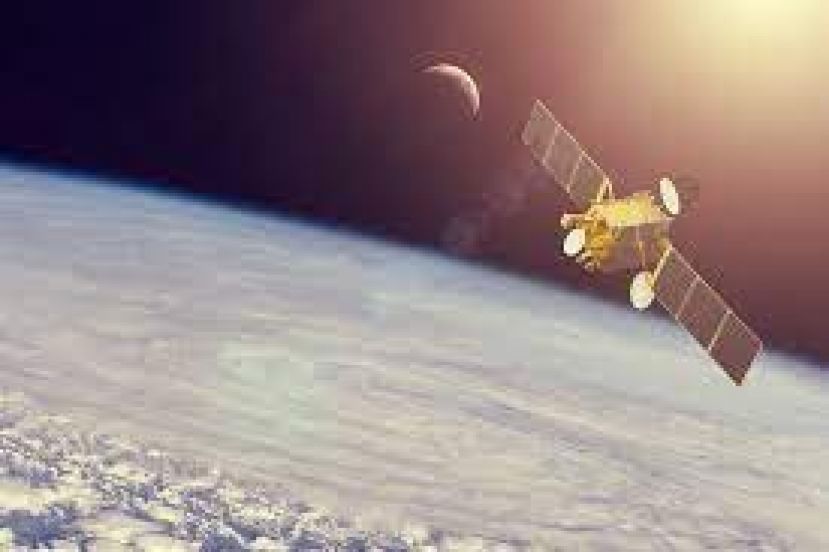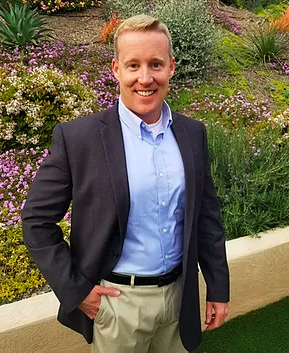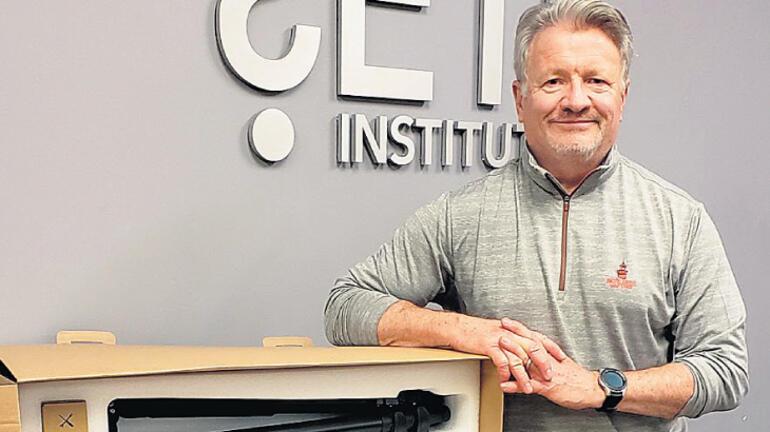
Senior Diplomatic Journalist Ali Cinar interviewed Brian Sinclair and Bill Diamond for the recent developments on space and UAP's.

Brian “Sunshine” Sinclair ,Retired Navy Pilot
What are the current challenges and opportunities for Space?
Challenges: One of the most pressing challenges right now includes the growing amount of collision hazards in Low Earth Orbit (LEO) whether it be orbital debris or the large number of constellation satellites. Another challenge has been created by the increasing accessibility to space. It is creating a more congested LEO that is quickly becoming both commercially and internationally competitive and contested. This challenge will probably require more domestic and international regulatory actions.
Opportunities: The US commercial sector has just begun to explore human space transport with promising results. After sub-orbital and LEO voyages become more mainstay, I hope that the commercial sector will expand its boundaries to the Moon with a far-distant goal being Mars. The challenge of orbital debris is also an opportunity...an opportunity for research and development into robotic efforts to "clean up LEO".
U.S established a U.S. Space Force. Do you think, other countries will establish a similar Space Force Unit. Are we going to see a global competition in the military?
Yes, they already have. China established its Space Force in 2015 as they realized that space is a critical US vulnerability for C4ISR in supporting precision strikes. Russia revitalized their space force,Kosmicheskie Voyska Rossii, KV, also in 2015 as a merger between the Russian Air Force and Aerospace Defense Forces. The global military competition for space has already begun.
What do you think about UAP?
As near-peer state actors continue to increase their unmanned aerial vehicle technology, I believe that the US military will have more and more encounters with what we now call Unexplained Aerial Phenomenon (UAP).
Very Respectfully,

Bill Diamond,SETI President &CEP
-What are the current challenges and opportunities for identifying UFO's?
UFO’s – now more generally referred to as UAPs or Unidentified Aerial Phenomenon – and their potential connection to the presence of alien intelligence in our skies, are fundamentally different than SETI research endeavors, though many people often confuse the two. UAP’s are a result of accidental or unintentional observation by private citizens and more recently by US military pilots, commercial airline pilots and others. To date there have been no government or privately funded efforts to intentionally search for, observe and characterize UAPs and as such, little is actually known about their nature or origins. While the US government funded a very modest ($20M USD) effort to ‘investigtate’ UAPs, this was limited to examining photographs, video footage and eye-witness accounts, and did not include any efforts at systematic observation.
SETI research is fundamentally different, in that it is an intentional and scientifically-based observational program in both the optical and radio portions of the electromatic spectrum. It is conducted systematically and is based on traditional scientific methods of testing hypothesis through designed experiments. SETI observations support independent verification and resulting datasets are fully open to the international scientific community and the general public. SETI observations are limited by instrument sensitivity, amount of ‘time on the sky’ using radio and optical telescopes, and by an absence of government funding. Nevertheless, they are widely accepted in the scientific community as representing the proper application of scientific investigative methods to test a hypothesis relating to the possible existence (past or present) of technological civilizations beyond Earth that might be discovered through the detection of their own electromagnetic emissions (radio/radar transmission, laser transmission, e.g.).
The biggest challenge for UAPs is the absence of any purpose-designed-and-built observation programs to accurately characterize the actual size, speed, and telemetry of these phenomena, by observing them in high-resolution, and from multiple simultaneous points of view. Without such efforts, UAPs remain the domain of accidental observation where accurate characterization of size, distance, speed, telemetry are completely unknown. Indeed, whether or not some UAPs may be the result of instrument errors or spurious signals, particularly in terms of radar observations, is still an open question.
In terms of opportunities, I believe there is an opportunity to design and build observational platforms for the specific purpose of characterizing UAPs and that resulting research programs based on such platforms could certainly help resolve many of the open questions surrounding UAP observations.
-U.S established a U.S. Space Force. Do you think UFOs would be one of the reasons?
I cannot speak for the US government, but I would imagine that the establishment of a U.S. space force is far more likely to be the result of concerns over what other nations are doing in space rather than concerns about the possibility of alien technology in our skies. It’s also important to remember here that UAPs are not and have not been observed in ‘space.’ These phenomenon are observed in our skies, like airplanes and other air-born technologies.
-Some retired navy pilots have encountered with UFO in the past (Recent media interview) Are the governments hiding this mystery? Why not public? Do you think, Humans will face with UFOs more often in the near future.
Here again, I cannot speak for the US or any other governments, but I am doubtful that any information is being purposely withheld. If there were truly solid and unambiguous evidence of alien presence in our skies, this would be an extremely difficult secret to maintain over many decades. It also seems strange to me that while UFO sightings are growing in number on an annual basis, they are not growing nearly as fast as the number of cameras aimed at our skies through smart-phone cameras, security cameras and similar systems. In spite of exponential improvements in camera resolution and exponential growth in number of cameras, typical UAP images and videos remain surprisingly unclear, unsharp, blurry, and generally poor quality. Why is that?
ABOUT SETI:
The SETI Institute was incorporated as a 501(c)3 California Non-Profit Corporation on November 20, 1984. The inaugural officers of the Institute were CEO Thomas Pierson and SETI scientist Jill Tarter. The Institute began operations on February 1, 1985.
Prior to the inception of the SETI Institute, NASA was funding a small project in the search for extraterrestrial intelligence. John Billingham, Chief of Life Sciences at NASA Ames Research Center and Bernard (Barney) Oliver, formerly of Hewlett-Packard invited Tom Pierson and others into discussions about maximizing the effectiveness of the funds, and ways of putting more money into the research and less into institutional overhead. These discussions led to the concept of a dedicated non-profit research organization focused on research and education around the factors of the Drake Equation. This vision was realized in the 1984 incorporation of the SETI Institute.
The newly-formed SETI Institute’s first Trustees were Frank Drake, Andrew Fraknoi, Roger Heyns, and William Welch. Over the years, such well-known figures as Carl Sagan, Lew Platt, and Nobel Prize winners Baruch Blumberg and Charles Townes have served on the Board of Trustees. Jill Tarter is currently a Trustee of the Institute.
The first grant-funded proposal at the Institute was for SETI research, led by Jill Tarter. Following shortly thereafter, the first astrobiology grant (then known as exobiology) was received, with Harold Klein as the Principal Investigator. Hundreds of research and education grants have been successfully managed at the SETI Institute since those first few awards.
Founder and CEO Tom Pierson helmed the SETI Institute from its inception until ill health overtook him in 2013. He passed away in 2014. Acting CEO Edna DeVore led the Institute until she was succeeded by President and CEO David Black in 2014, who served for a year.
Current President and CEO Bill Diamond took charge in June 2015. New directions for the SETI Institute have led to a restructuring of the operations of the Institute, folding the SETI research program into the larger science umbrella of the Carl Sagan Center. Nathalie Cabrol holds the position of Director of the Carl Sagan Center. Simon Steel is the Senior Director of Education and STEM Programs, while Pamela Harman and Rebecca McDonald are Director of Education and Director of Communications, respectively. Education and Public Outreach has always been an integral part of the Institute, including space science and astrobiology curricula for formal and informal education, the popular radio show/podcast Big Picture Science, the SETI Talks lecture series, public lectures by scientists, and popular science writing. Outreach to the general public via social media and other efforts has received new emphasis as the Institute looks forward to continuing its mission to explore the possibilities of life in the universe and share discoveries with the public.